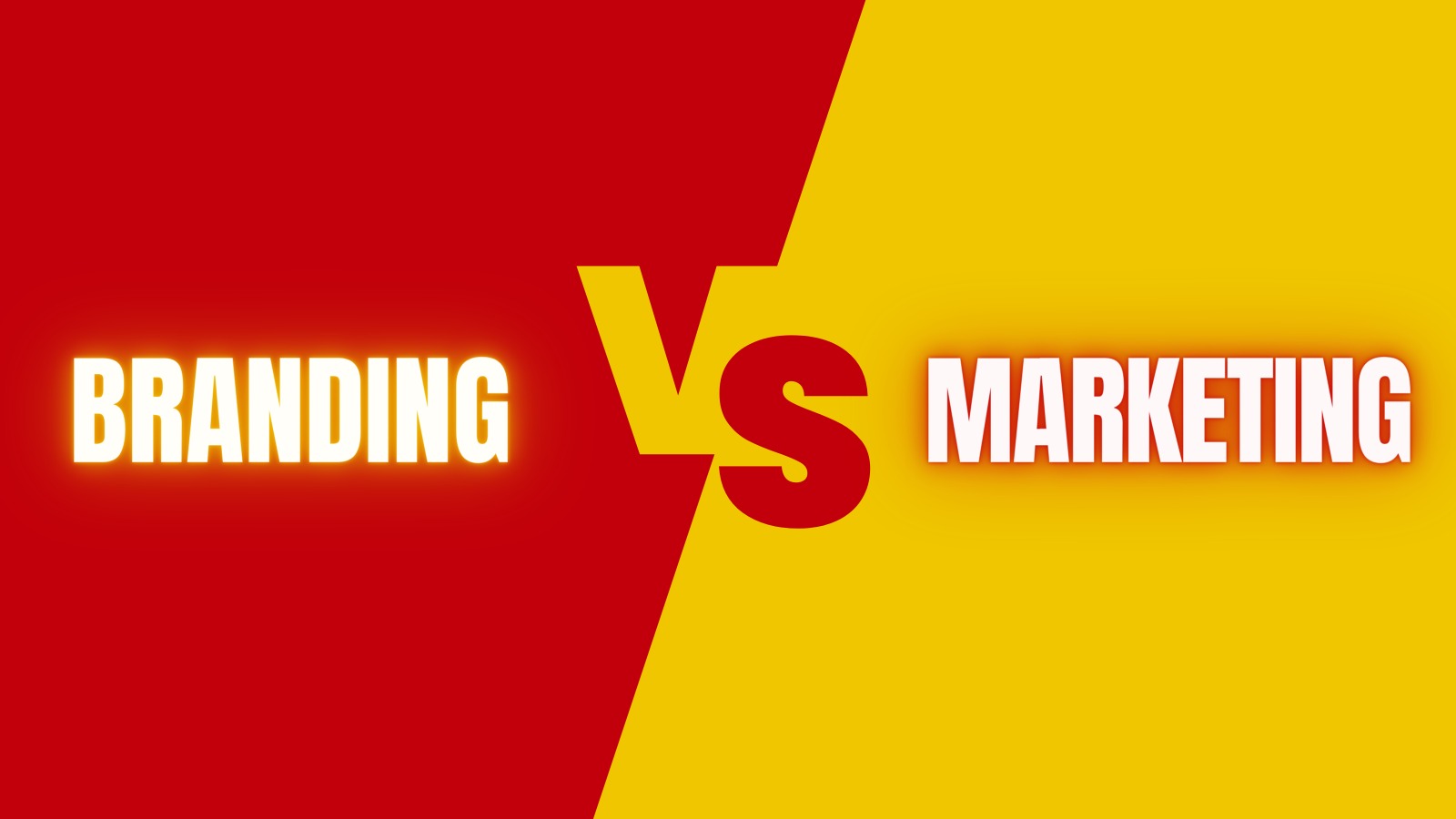In the world of business, marketing, and branding are often used interchangeably. However, they are not the same thing. While marketing focuses on promoting products and services, branding goes deeper by creating a unique identity and emotional connection with consumers. So, what’s the difference between marketing and branding? And why does it matter?
Marketing is all about communication and persuasion. It involves strategies and tactics to reach a target audience and persuade them to buy a product or service. It includes activities like advertising, public relations, and market research. On the other hand, branding is about creating a perception of a company or product in the minds of consumers. It encompasses elements such as brand values, personality, and visual identity.
Understanding the distinction between marketing and branding is crucial because it affects how businesses approach their overall strategy. By focusing on both marketing and branding, companies can create a consistent and compelling message that resonates with their target audience. This leads to stronger brand loyalty, increased customer trust, and ultimately, business success.
In this article, we will delve deeper into the differences between marketing and branding, and explore why businesses need to have a clear understanding of both. So, let’s get started and unlock the power of effective marketing and branding strategies.
Understanding the Difference between Marketing and Branding
Marketing and branding are often used interchangeably, but they are distinct concepts. While marketing focuses on promoting and selling products or services, branding is about creating a unique identity and emotional connection with consumers.
Marketing involves activities such as advertising, public relations, and market research. Its primary objective is to reach a target audience and persuade them to make a purchase. It is a tactical approach that aims to generate leads, increase sales, and drive revenue. Marketing strategies often revolve around product features, benefits, and competitive advantages.
On the other hand, branding is focused on creating a perception of a company or product in the minds of consumers. It encompasses elements such as brand values, personality, and visual identity. Branding is about building a relationship with consumers based on trust, loyalty, and emotional connection. It goes beyond product features and focuses on the intangible aspects that differentiate a brand from its competitors.
The Role of Marketing in Business
Marketing plays a crucial role in business success. It is the bridge between a company and its customers, enabling businesses to communicate their value proposition effectively. Here are some key roles marketing plays in business:
- Creating Awareness
Marketing activities like advertising and promotion help create awareness about a company’s products or services. By reaching out to the target audience through various channels, marketing helps businesses capture the attention of potential customers and introduce them to what the company has to offer.
- Generating Leads
Marketing strategies like lead generation campaigns and content marketing help businesses attract potential customers and convert them into leads. By offering valuable content, engaging advertisements, and compelling offers, marketing helps businesses generate interest and capture leads for further nurturing and sales conversion.
- Increasing Sales
Marketing is ultimately about driving revenue. By implementing effective sales strategies, businesses can convert leads into customers and increase sales. Marketing activities like email marketing, social media advertising, and sales promotions help businesses engage with potential customers and guide them through the sales funnel, leading to increased conversions and revenue.
- Building Customer Relationships
Marketing is not just about acquiring new customers; it is also about building and nurturing relationships with existing customers. By implementing customer retention strategies, businesses can keep their customers engaged and satisfied. This leads to increased customer loyalty, repeat purchases, and positive word-of-mouth referrals.
The Role of Branding in Business
While marketing focuses on promoting products and services, branding goes deeper by creating a unique identity and emotional connection with consumers. Here are some key roles branding plays in business:
- Differentiation
In a crowded marketplace, branding helps businesses stand out from the competition. By defining and communicating a unique value proposition, businesses can differentiate themselves and create a perception of superiority in the minds of consumers. Strong branding helps customers see a company or product as the preferred choice, even if there are other options available.
- Building Trust and Loyalty
Branding is about building trust and loyalty with customers. When customers have a positive perception of a brand, they are more likely to trust its products or services. Through consistent messaging and experiences, branding helps create a sense of familiarity and reliability, leading to increased customer loyalty and repeat purchases.
- Creating Emotional Connection
Branding is not just about logos and visual identity; it is also about creating an emotional connection with consumers. By aligning brand values with customer values and aspirations, businesses can evoke emotions and forge a deeper connection with their target audience. This emotional connection builds brand affinity and encourages customers to choose a particular brand over its competitors.
- Long-Term Business Growth
Branding is an investment in long-term business growth. By building a strong brand, businesses can command higher prices, attract premium customers, and expand into new markets. A well-established brand with a loyal customer base also provides a competitive advantage, making it difficult for new entrants to replicate the same level of customer trust and brand recognition.
Key Components of a Marketing Strategy
A marketing strategy is a roadmap that outlines how a company will reach its target audience and achieve its marketing objectives. It encompasses various components that work together to create a cohesive and effective marketing plan. Here are some key components of a marketing strategy:
- Target Audience
Identifying and understanding the target audience is essential for effective marketing. A target audience consists of individuals or groups who are most likely to be interested in a company’s products or services. By defining the target audience, businesses can tailor their marketing efforts to meet the specific needs and preferences of their customers.
- Value Proposition
A value proposition is a unique selling proposition that sets a company apart from its competitors. It communicates the value and benefits that customers can expect from a company’s products or services. A strong value proposition helps businesses attract and retain customers by addressing their pain points and providing solutions that meet their needs.
- Marketing Channels
Marketing channels are the various platforms and mediums through which businesses reach their target audience. Examples of marketing channels include social media, email marketing, content marketing, search engine optimization, and traditional advertising channels such as television and print media. Choosing the right marketing channels depends on the target audience and the nature of the products or services being offered.
- Marketing Tactics
Marketing tactics are the specific activities and actions that businesses implement to promote their products or services. Examples of marketing tactics include advertising campaigns, public relations activities, sales promotions, content creation, and influencer partnerships. The choice of marketing tactics depends on the marketing objectives, target audience, and available resources.
- Measurement and Analysis
Measuring and analyzing marketing efforts is crucial for evaluating the effectiveness of a marketing strategy. By tracking key performance indicators (KPIs) such as website traffic, conversion rates, customer acquisition costs, and customer lifetime value, businesses can assess the success of their marketing campaigns and make data-driven decisions to optimize their marketing efforts.
Key Components of a Branding Strategy
A branding strategy is a long-term plan that outlines how a company will create and manage its brand identity. It involves defining the brand’s values, personality, and visual identity, and communicating them consistently across all touchpoints. Here are some key components of a branding strategy:
- Brand Positioning
Brand positioning refers to the unique space a brand occupies in the minds of consumers. It involves identifying the brand’s target audience, understanding their needs and preferences, and positioning the brand in a way that resonates with them. Brand positioning helps businesses differentiate themselves from competitors and create a perception of value and superiority.
- Brand Values and Personality
Brand values and personality are the core attributes that define a brand and shape its identity. Brand values are the guiding principles and beliefs that a brand stands for, while brand personality refers to the human-like traits and characteristics associated with a brand. Defining brand values and personality helps businesses create a consistent and authentic brand identity that connects with consumers on an emotional level.
- Visual Identity
Visual identity encompasses the visual elements that represent a brand, such as logos, colors, typography, and imagery. Consistent visual identity helps customers recognize and identify a brand across different platforms and touchpoints. It creates visual cues that evoke brand associations and reinforces the brand’s values and personality.
- Brand Messaging
Brand messaging is the language and tone used to communicate a brand’s value proposition and key messages. It includes taglines, slogans, brand stories, and key brand messages. Effective brand messaging resonates with the target audience and communicates the brand’s unique selling points compellingly and memorably.
- Brand Experience
Brand experience refers to the overall experience customers have with a brand at every touchpoint. It includes interactions with the brand’s products or services, customer service, website, social media presence, and physical store (if applicable). A positive brand experience creates a lasting impression and reinforces the brand’s values and promises.
How Marketing and Branding Work Together
Marketing and branding are closely intertwined to create a cohesive and effective business strategy. While marketing focuses on promoting products and services, branding provides the foundation for effective marketing. Here’s how marketing and branding work together:
- Consistent Messaging
Effective marketing campaigns align with the brand’s values, personality, and visual identity. By ensuring consistent messaging across all marketing channels and touchpoints, businesses create a unified brand experience that reinforces the brand’s identity and resonates with the target audience. Consistent messaging builds brand recognition and trust.
- Targeted Communication
Marketing activities are targeted toward specific segments of the target audience. By understanding the target audience and their preferences, businesses can tailor their marketing messages to appeal to the specific needs and desires of their customers. Branding provides the foundation for understanding the target audience and crafting targeted marketing communication.
- Emotional Connection
Branding creates an emotional connection with consumers while marketing leverages that connection to drive action. By aligning marketing messages with the brand’s values and personality, businesses can evoke emotions and forge a deeper connection with their target audience. Emotional connection leads to increased brand loyalty and customer advocacy.
- Building Trust and Loyalty
Effective marketing strategies build trust and loyalty by delivering on the brand’s promises and providing a positive customer experience. Branding lays the foundation for trust and loyalty by creating a consistent and reliable brand image. Marketing activities like customer testimonials, case studies, and social proof reinforce the brand’s credibility and foster trust among potential customers.
Case Studies: Successful Marketing and Branding Campaigns
To illustrate the importance of effective marketing and branding, let’s take a look at some successful campaigns that have effectively combined marketing and branding strategies:
- Nike – “Just Do It”
Nike’s “Just Do It” campaign is a prime example of successful marketing and branding. The campaign, which began in 1988, focused on inspiring athletes and encouraging them to push their limits. The campaign’s tagline, “Just Do It,” became synonymous with Nike’s brand and represented the brand’s values of determination, courage, and ambition. Through powerful advertising, sponsorships, and celebrity endorsements, Nike successfully created a strong brand identity and emotional connection with its target audience.
- Coca-Cola – “Share a Coke”
Coca-Cola’s “Share a Coke” campaign is another example of effective marketing and branding. The campaign, which launched in 2011, personalized Coca-Cola bottles and cans with popular names and phrases. By personalizing their packaging, Coca-Cola aimed to create a sense of connection and encourage people to share a Coke with someone they care about. The campaign generated widespread social media buzz and increased consumer engagement, reinforcing Coca-Cola’s brand values of happiness, friendship, and sharing.
- Apple – Think Different
Apple’s “Think Different” campaign, launched in 1997, is a testament to the power of branding. The campaign celebrated iconic individuals like Albert Einstein, Mahatma Gandhi, and Martin Luther King Jr., who challenged the status quo and changed the world. Through its advertising and messaging, Apple positioned itself as a brand that celebrates creativity, innovation, and individuality. The campaign resonated with consumers and helped Apple establish itself as a brand that thinks differently.
The Importance of Aligning Marketing and Branding Efforts
Aligning marketing and branding efforts is essential for creating a consistent and compelling brand experience. Here’s why it is important:
- Consistency
Consistent branding and marketing messages create a unified and recognizable brand identity. When marketing messages align with the brand’s values and personality, it creates a consistent brand experience that builds trust and loyalty among customers. Inconsistent branding and marketing can confuse customers and dilute the brand’s identity.
- Brand Recognition
Aligning marketing and branding efforts helps create brand recognition. When customers consistently encounter the brand’s visual identity, messaging, and values across different marketing channels, it reinforces the brand’s presence and makes it easily recognizable. Brand recognition leads to increased brand recall and customer preference.
- Emotional Connection
A strong brand creates an emotional connection with consumers, and marketing activities can leverage that emotional connection to drive action. By aligning marketing messages with the brand’s values and personality, businesses can evoke emotions and forge a deeper connection with their target audience. Emotional connection leads to increased brand loyalty and customer advocacy.
- Competitive Advantage
Aligning marketing and branding efforts provides a competitive advantage. A strong and consistent brand image sets a company apart from its competitors and makes it difficult for new entrants to replicate the same level of customer trust and brand recognition. By aligning marketing and branding strategies, businesses can create a unique and differentiated brand that stands out in a crowded marketplace.
Conclusion: The Impact of Effective Marketing and Branding
The distinction between marketing and branding is subtle but powerful. Marketing fuels the engine of sales, employing tactics to drive interest and purchases. Branding, on the other hand, is the heart and soul of a business – the values, personality, and the promise it makes to its customers.
Businesses that understand this interplay and invest in both marketing and branding create a potent combination. Consistent messaging that amplifies a unique brand identity leads to customer loyalty, competitive advantage, and ultimately, sustained business growth. Companies like Nike, Coca-Cola, and Apple demonstrate that when marketing and branding work in harmony, businesses can carve out an enduring and powerful position in the hearts and minds of their customers.
FAQs on Marketing and Branding Strategies:
Q1: What is the primary focus of marketing?
Ans. Marketing focuses on promoting products and services to reach a target audience and drive sales.
Q2: How does branding differ from marketing?
Ans. Branding goes beyond promoting products; it creates a unique identity, emotional connection, and perception of a company or product.
Q3: Why is consistent messaging important in branding and marketing?
Ans. Consistent messaging reinforces a brand’s identity, builds trust, and increases brand recognition among customers.
Q4: What role does marketing play in creating brand awareness?
Ans. Marketing activities like advertising and promotion help create awareness about a company’s products or services among the target audience.
Q5: How does branding contribute to building customer loyalty?
Ans. Branding builds trust, emotional connection, and a positive perception of a brand, leading to increased customer loyalty and repeat purchases.
Q6: What are some key components of a marketing strategy?
Ans. Key components include identifying the target audience, defining the value proposition, selecting marketing channels, implementing marketing tactics, and measuring results.
Q7: What is brand positioning, and why is it important?
Ans. Brand positioning refers to how a brand is perceived by consumers. It’s crucial as it differentiates a brand from competitors and communicates its unique value to the target audience.
Q8: How do marketing and branding work together to create a competitive advantage?
Ans. Marketing leverages branding to create consistent messaging, emotional connection, and customer trust, leading to a competitive advantage in the marketplace.
Q9: Can you give an example of a successful branding and marketing campaign?
Ans. Nike’s “Just Do It” campaign exemplifies successful branding and marketing by creating a strong emotional connection and reinforcing the brand’s values.
Q10: What is the ultimate goal of aligning marketing and branding efforts?
Ans. The ultimate goal is to create a cohesive brand experience that resonates with customers, builds loyalty, and provides a competitive advantage in the market.



